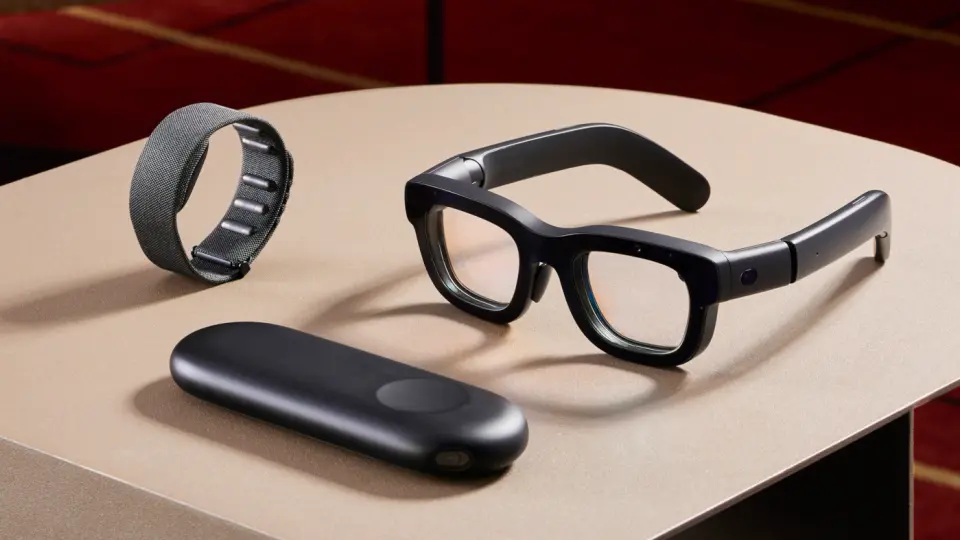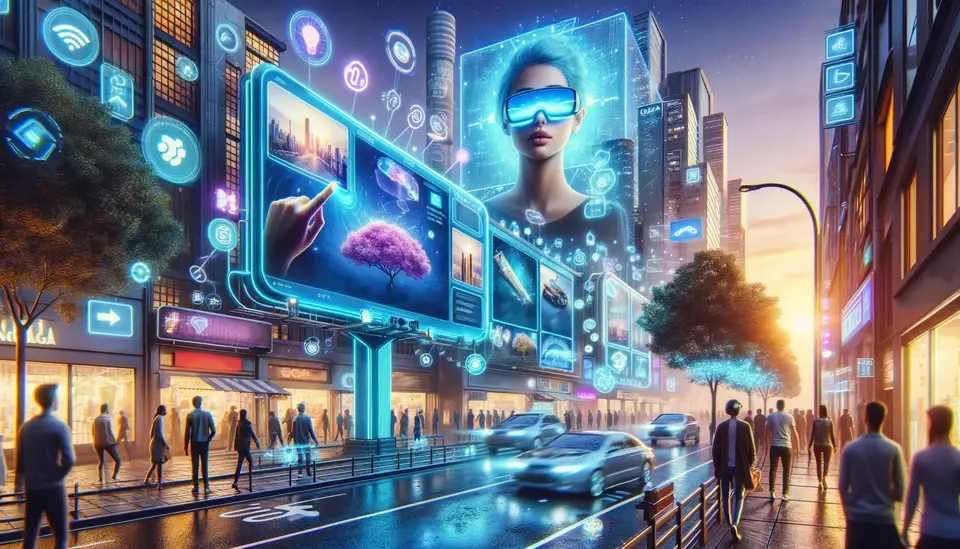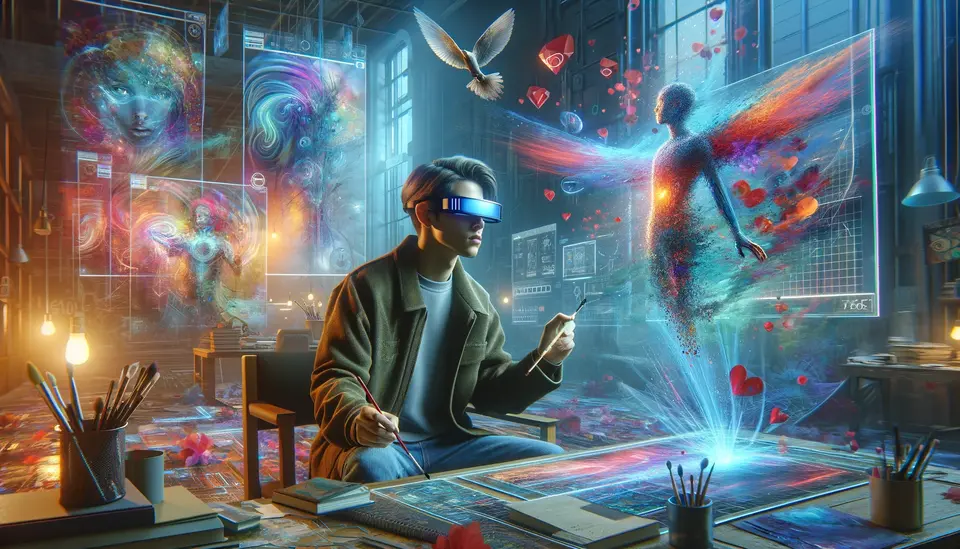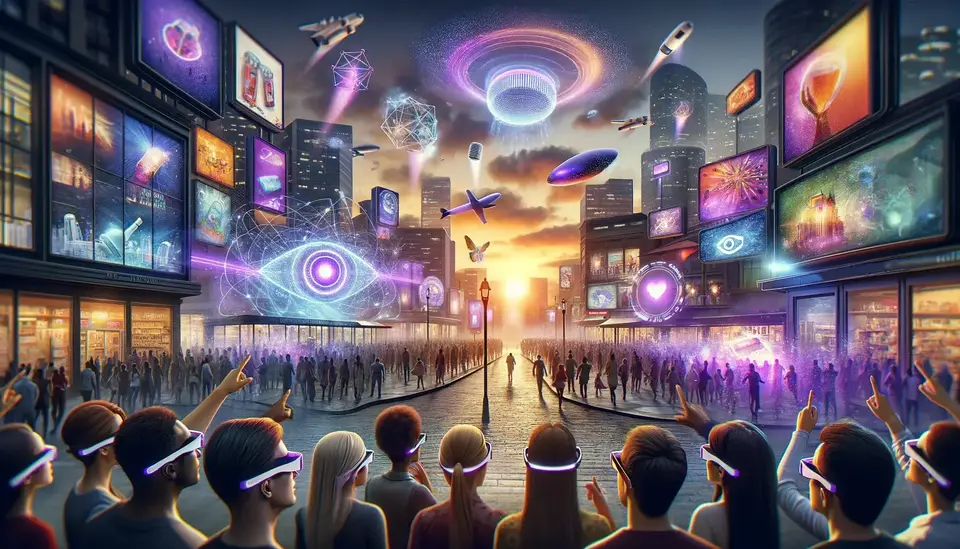15 Examples of the Use of Augmented Reality (AR) in Design
Posted on April 18, 2023 4 minutes 764 words
Table of contents
- 1. Architectural Design and Visualization: Morpholio Trace
- 2. Urban Planning and Cityscape Design: CityEngine
- 3. Interior Design and Space Planning: IKEA Place
- 4. Fashion Design and Customization: Wanna Kicks
- 5. Product Design and Prototyping: Gravity Sketch
- 6. Automotive Design: BMW i Visualizer
- 7. Exhibition and Trade Show Design: PTC Vuforia
- 8. Package Design and Marketing: 19 Crimes Wine
- 9. Landscape Design: iScape
- 10. Wayfinding and Signage Design: Google Maps Live View
- 11. Retail Store Design: Nike’s House of Innovation
- 12. User Interface (UI) and User Experience (UX) Design: Magic Leap One
- 13. Art and Installation Design: Rain Room by Random International
- 14. Museum and Cultural Heritage Design: Smithsonian Institution’s Skin and Bones App
- 15. Gaming and Entertainment Design: Pokémon GO
- Conclusion
Augmented reality (AR) is transforming the world of design by offering immersive, interactive, and intuitive experiences. In this blog post, we will explore 15 real-world examples of how AR is revolutionizing various industries and shaping the future of our built environment.
1. Architectural Design and Visualization: Morpholio Trace
Morpholio Trace is an AR-enabled app that allows architects to overlay their designs onto real-world environments. This technology enables architects to visualize their projects in context, making it easier to share ideas with clients and collaborators.
2. Urban Planning and Cityscape Design: CityEngine
CityEngine, an Esri product, helps urban planners create and visualize 3D city models. The software integrates with AR devices to provide immersive visualizations of proposed projects and their impact on the existing cityscape.
3. Interior Design and Space Planning: IKEA Place
IKEA Place is an AR app that allows users to virtually place furniture and decorations in their homes. Users can experiment with different layouts and styles, ensuring the perfect fit before making a purchase.
4. Fashion Design and Customization: Wanna Kicks
Wanna Kicks is an AR app that lets users virtually try on sneakers, enabling them to experiment with various styles and colors before making a purchase. This technology streamlines the shopping process and reduces the need for physical try-ons.
5. Product Design and Prototyping: Gravity Sketch
Gravity Sketch is a VR/AR design tool that allows designers to create 3D models and prototypes. This technology streamlines the development process, reducing the need for physical models and enhancing collaboration.
6. Automotive Design: BMW i Visualizer
The BMW i Visualizer is an AR app that enables users to explore and customize BMW vehicles in a 3D environment. Customers can change colors, materials, and features, creating a personalized experience.
7. Exhibition and Trade Show Design: PTC Vuforia
PTC Vuforia is an AR platform that allows exhibitors to create interactive displays for trade shows and events. This technology enhances visitor engagement by providing immersive product demonstrations and digital experiences.
8. Package Design and Marketing: 19 Crimes Wine
19 Crimes Wine has developed AR-enabled wine labels that bring the stories of their historic convicts to life. When users scan the labels with their smartphones, they can access interactive content, promotions, and engaging experiences.
9. Landscape Design: iScape
iScape is an AR app that allows landscape architects and homeowners to visualize and design outdoor spaces. Users can place virtual plants, trees, and other elements to create realistic, interactive visualizations of their projects.
10. Wayfinding and Signage Design: Google Maps Live View
Google Maps Live View is an AR-based wayfinding system that provides real-time navigation information and contextual data. Users can see directions and points of interest overlaid on their smartphone camera’s view, simplifying navigation.
11. Retail Store Design: Nike’s House of Innovation
Nike’s House of Innovation in New York City uses AR technology to create interactive store displays, allowing customers to access additional product information and personalize their shopping experience.
12. User Interface (UI) and User Experience (UX) Design: Magic Leap One
Magic Leap One is an AR headset that creates immersive and intuitive interfaces, blending seamlessly with the user’s environment. The headset allows designers to develop spatial computing applications that revolutionize how users interact with digital content.
13. Art and Installation Design: Rain Room by Random International
Rain Room is an art installation that uses AR technology to create a room where it appears to rain, but visitors remain dry. Sensors track visitors’ movements, adjusting the rain pattern to avoid them, creating an immersive and engaging experience.
14. Museum and Cultural Heritage Design: Smithsonian Institution’s Skin and Bones App
The Smithsonian Institution’s Skin and Bones App uses AR technology to bring specimens to life at the National Museum of Natural History. By scanning exhibit labels, visitors can access interactive 3D models and animations that provide context-rich information about the displayed specimens.
15. Gaming and Entertainment Design: Pokémon GO
Pokémon GO is an immensely popular AR game that blends the virtual and real worlds, allowing users to find, catch, and battle Pokémon in their surroundings. This game revolutionized mobile gaming and introduced AR technology to millions of users worldwide.
Conclusion
From architecture and interior design to gaming and advertising, augmented reality is rapidly transforming various industries and revolutionizing the way designers create and visualize their projects. These 15 real-world examples demonstrate the potential of AR technology to enhance our experiences, streamline processes, and enable new forms of creative expression. As AR becomes more prevalent, we can expect even more innovative applications and immersive experiences in the future.








